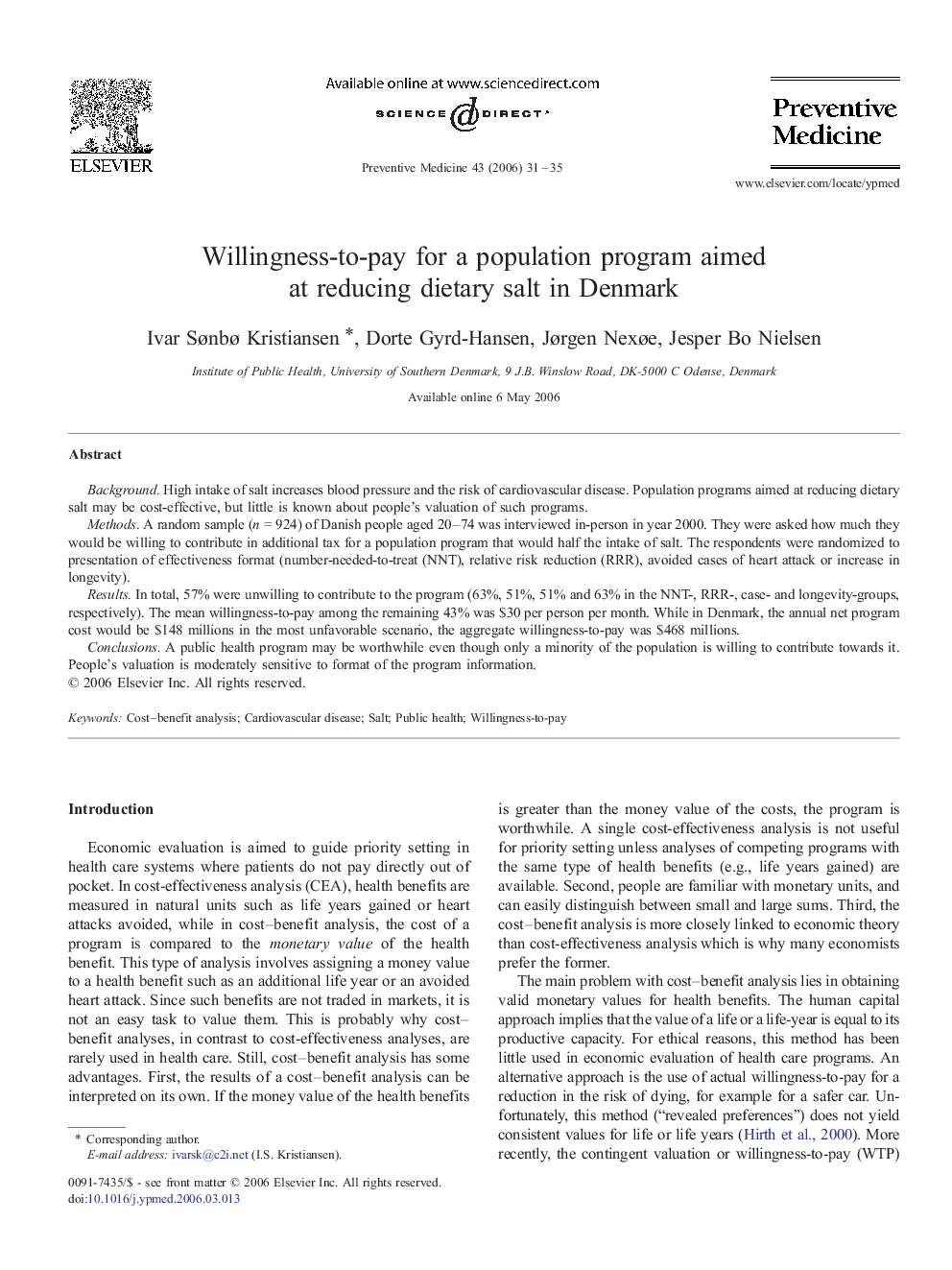| Article ID | Journal | Published Year | Pages | File Type |
|---|---|---|---|---|
| 3102119 | Preventive Medicine | 2006 | 5 Pages |
Background.High intake of salt increases blood pressure and the risk of cardiovascular disease. Population programs aimed at reducing dietary salt may be cost-effective, but little is known about people's valuation of such programs.Methods.A random sample (n = 924) of Danish people aged 20–74 was interviewed in-person in year 2000. They were asked how much they would be willing to contribute in additional tax for a population program that would half the intake of salt. The respondents were randomized to presentation of effectiveness format (number-needed-to-treat (NNT), relative risk reduction (RRR), avoided cases of heart attack or increase in longevity).Results.In total, 57% were unwilling to contribute to the program (63%, 51%, 51% and 63% in the NNT-, RRR-, case- and longevity-groups, respectively). The mean willingness-to-pay among the remaining 43% was $30 per person per month. While in Denmark, the annual net program cost would be $148 millions in the most unfavorable scenario, the aggregate willingness-to-pay was $468 millions.Conclusions.A public health program may be worthwhile even though only a minority of the population is willing to contribute towards it. People's valuation is moderately sensitive to format of the program information.
